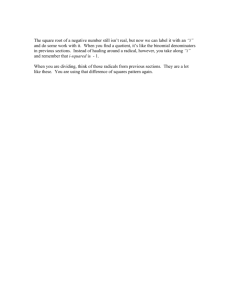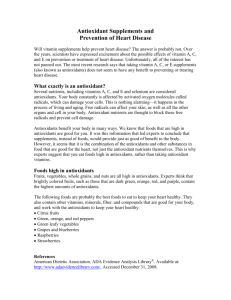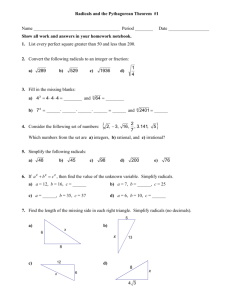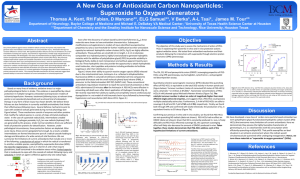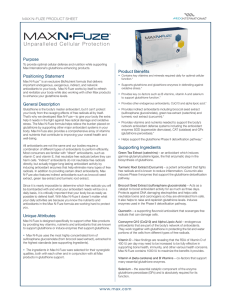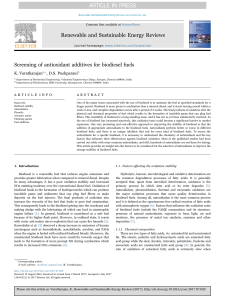Vitamins & Antioxidants
advertisement
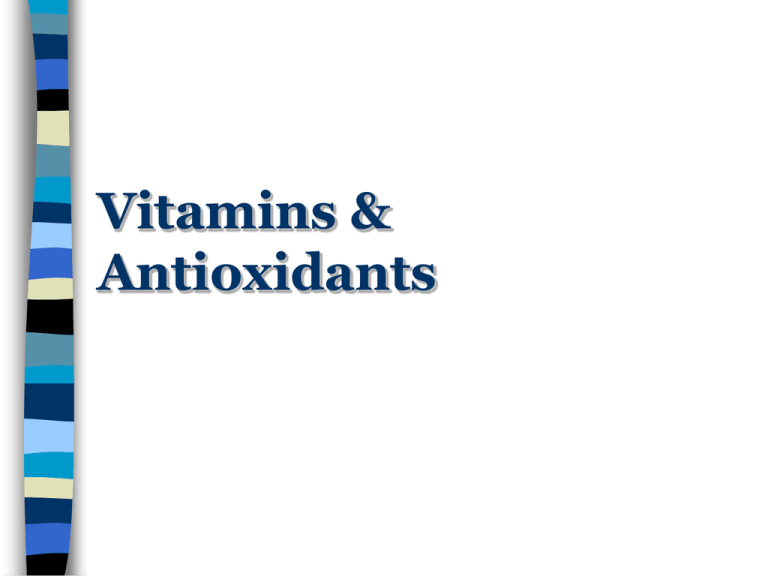
Vitamins & Antioxidants Two Classes Fat-Soluble – – – – A D E K Water-Soluble – Vitamin C – 9 B-vitamins • • • • • • • • • Thiamin Riboflavin Niacin Pantothenic Acid B6 B12 Folate Biotin Choline Effects of Solubility Solubility affects absorption, transport, storage, and excretion Fat-soluble vitamins Lipid-like; mix well with fats Require bile for digestion and absorption; absorbed along with fat Travel through lymphatic system to blood Excesses are stored Liver and adipose tissue Intakes can vary day to day without deficiency risk, but toxicity possible with high doses Water-Soluble Vitamins Absorbed directly into blood – No carriers needed Kidneys filter out excesses of most (not all!) – Excretion in the urine Most are not stored in the body – Need frequent replenishing Megadoses of some can still cause adverse effects More is not necessarily better… Bioavailability Quantity provided by food Amount absorbed and used by body Factors influencing bioavailability Efficiency of digestion Nutrition status Method of food preparation Source of nutrient Other foods consumed at same time Antioxidants Some vitamins –E –C – Beta-carotene (provitamin A) Many phytochemicals Body’s own antioxidant enzymes assisted by some minerals – – – – Selenium Zinc Copper Manganese Free Radicals Free radical: active oxidant Compound with one or more unpaired electrons Look to steal electron from vulnerable compound Electron-snatching chain reaction: damage to DNA, lipids, and cell structures Free radical production Normal bodily functions Environmental factors Free Radicals & Antioxidants Free Radicals and Disease Antioxidants Neutralize free radicals Donate an electron, but remain stable Free radical attacks Some are helpful Immune system destruction of viruses, bacteria Most cause damage Free Radicals and Disease Free radical damage Interferes with cell function Contributes to disease progression and aging Oxidation of polyunsaturated fatty acids in lipoproteins and membranes Alteration of DNA, RNA, and proteins Illicits inflammatory response Free-Radical Damage Free Radicals and Disease Body’s natural defenses and repair systems Enzymes that destroy free-radicals and repair damage Not 100% effective Less effective with age Dietary antioxidants help to defend against oxidative stress Why do we need antioxidants? Limit free-radical formation Destroy free radicals or precursors Stimulate antioxidant enzymes Repair oxidative damage Support healthy immune system Foods, Supplements, or Both? Replenish antioxidants regularly Foods Contain other valuable nutrients Antioxidant actions of fruits and vegetables are greater than their nutrients alone Supplements Research inconclusive Contents are limited Physiological levels vs. pharmacological doses
